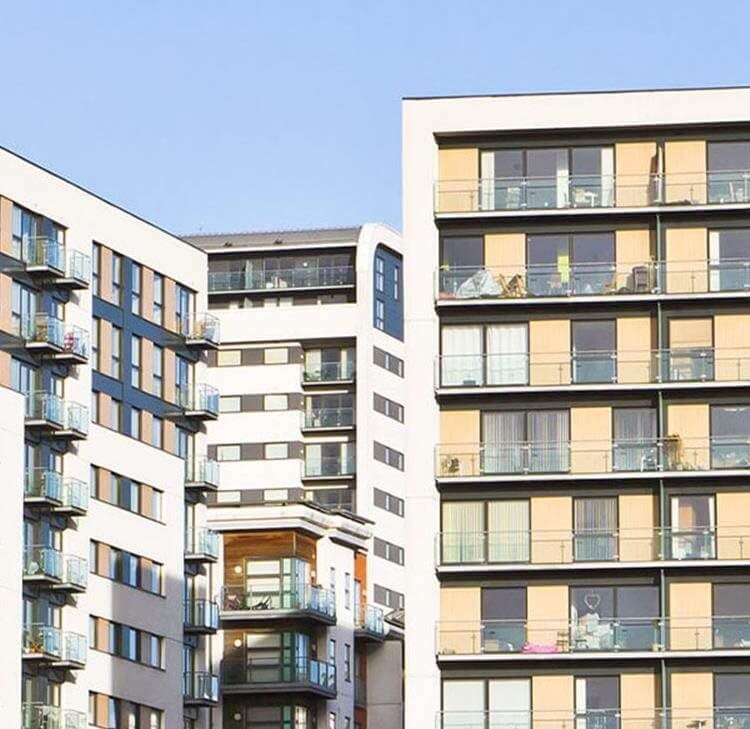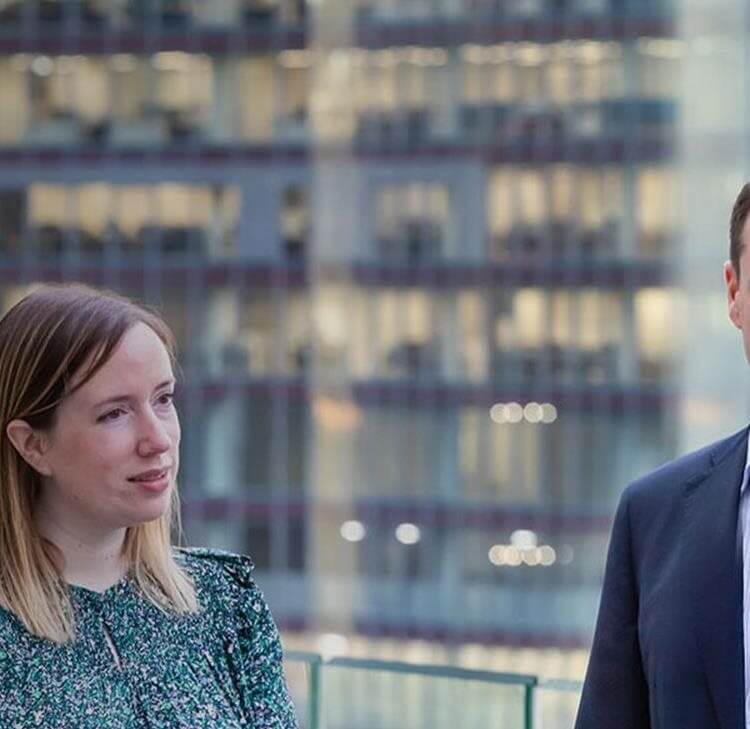Court of Appeal decision in London International Exhibition Centre and Others v Allianz and Others
Policyholders prevail as the Court of Appeal upholds the first instance finding that there is coverage for Covid-19 under ‘at the premises’ type wordings.
On 6 September 2024, the Court of Appeal handed down its decision in the appeal of the consolidated ‘at the premises’ or ‘ATP’ type wordings. The Court of Appeal unanimously rejected insurers’ appeals and upheld Mr Justice Jacobs’ first instance decision that the Supreme Court test in FCA v Arch on causation in respect of ‘radius’ or ‘in the vicinity’ disease wordings also applied to ‘at the premises’ disease cover.
The decision at first instance
Mr Justice Jacobs had been asked to consider certain Preliminary Issues in six expedited test cases involving various forms of disease ‘at the premises’ wordings with the main issues in dispute being:
- Causation - whether the Supreme Court’s ‘concurrent causes’ test on causation as set down in the FCA v Arch Test Case also applied to disease ‘at the premises’ wordings in the same way as it was held by the Supreme Court to apply to the ‘radius’ or ‘in the vicinity’ disease wordings;
- Cases of Covid-19 Pre-Classification as a ‘Notifiable Disease’ – whether there was cover for occurrences of Covid-19 (at the premises) before it was made a ‘notifiable disease’;
- ‘Medical Officer for Health of the Public Authority’ – whether the Chief Medical Officer of England and/or Deputy Chiel Medical Officer in England (and equivalent officers in other UK nations) come within the expression ‘Medical Officer for Health of the Public Authority’; and
- ‘Suffered by’ -– whether, in the Mayfair Banqueting policy, ‘notifiable infectious disease…suffered by any visitor or employee’ was equivalent to an ‘outbreak’ or ‘occurrence of’ or ‘sustaining’ a disease.
At first instance, Mr Justice Jacobs found that the Supreme Court test on causation in respect of ‘radius’ or ‘in the vicinity’ disease wordings also applied to disease ‘at the premises’ cover. In reaching this conclusion, Mr Justice Jacobs rejected Insurers’ argument that there was a fundamental distinction between a ‘radius clause’ and an ‘at the premises’ clause.
The Judge held that there was no dispute between the parties that logically a radius could be shrunk almost to vanishing point, up to the premises themselves. In his view, it was not an omission in the Supreme Court’s judgment in FCA v Arch that there was no substantial discussion on why the same causation approach could not be applied whatever the size of the radius.
Given that a radius could be shrunk from say 25 miles to 1 mile without making any difference to the Supreme Court’s analysis on causation, the Judge held that there was no reason why that analysis would change if it was shrunk even further to cover ‘at the premises’. As such, there was no principled reason for applying a different test on causation between the two different types of wordings and the ‘concurrent cause’ test applied equally to ‘at the premises’ type clauses.
Insurers appealed, arguing that ‘at the premises’ type cover could be distinguished from the Supreme Court’s reasoning in the FCA v Arch Test Case as the ATP wording was intended to provide a more limited, localised cover, which focussed on the individual insured premises.
Court of Appeal decision
Causation test
The Court of Appeal rejected insurers’ submissions that an ‘ATP’ clause was materially different to a ‘radius clause’, although the Court of Appeal agreed with insurers that Mr Justice Jacobs should have started by considering the interpretation of the ATP policies, having regard to their language and context, rather than starting by asking whether those clauses differed materially from the radius clauses considered by the Supreme Court in FCA v Arch.
Notwithstanding that, the Court of Appeal noted that all of the ATP wordings before them required there to be an occurrence (or similar) of a notifiable disease at the premises. If the parties had thought about the circumstances in which the premises were likely to be closed by a relevant authority as a result of an occurrence of a notifiable disease at the premises, they would have contemplated that those closures would be unlikely to be a response only to the occurrence of the disease at the premises.
It followed that the government’s advice to close the insured premises was caused by what was happening nationally and what was agreed (for the purpose of the Preliminary Issues hearing) to have been an occurrence of Covid-19 at the premises, operating in combination with all other cases of Covid-19 in the country.
This approach was held to be clear and simple to apply, as opposed to the insurers’ interpretation which would require the policyholder to establish precisely what knowledge (or belief) the relevant authority had as to the existence of a disease at any given location. It also reflected the way in which it would be understood by the ordinary policyholder taking out this kind of policy, which was noted to be mostly SME businesses.
Other issues
The Court of Appeal also considered the following:
- There can be no cover for cases of Covid-19 before it had been declared a ‘notifiable disease’.
- The term 'Medical Officer of Health for the Public Authority 'must be construed as a whole and by applying the natural meaning of the words. A ‘Public Authority’ was not limited to local authorities and included measures by the government or any public body. ‘Medical Officer of Health’ included the Chief Medical Officer and other medical officers advising such public bodies.
- Mr Justice Jacobs was correct in his finding that ‘notifiable infectious disease…suffered by any visitor or employee’ only meant that the person needed to have contracted Covid-19 – they did not need to have shown any symptoms.
Comment
The decision will have a considerable impact on insurers who have declined claims based on ‘disease at the premises’ type wordings.
There will still be an evidential burden for the claimants to overcome to show that there was, on the balance of probabilities, a case of Covid-19 ‘at the premises’ but given the prevalence of Covid-19 at the time that should be possible in most cases.
There are still several Covid BI claims being heard by the courts with various trials scheduled to take place during 2025. Of most significance to the market is likely to be the appeal of the ‘Prevention of Access’ consolidated claims which is scheduled to be heard in early 2025. This appeal will consider the first instance decision of Mr Justice Jacobs (handed down in January 2024) which held that insurers are entitled to take the benefit of furlough payments received by insureds when quantifying losses.
Court of Appeal decision in Unipolsai Assicurazoni SpA v Covea Insurance Plc
Court of Appeal upholds decision in Property Catastrophe Excess of Loss reinsurance dispute that the Covid-19 pandemic in March 2020 was a ‘catastrophe’ under the reinsurance and that the business interruption losses were not limited to the duration of the ‘Hours Clause’.
On 30 September 2024, the Court of Appeal handed down its decision in the appeal of the findings of Mr Justice Foxton in Covéa v Unipolsai Assicurazioni SpA (“Unipolsai”).
At first instance, Mr Justice Foxton had heard Unipolsai’s appeal against an arbitration Award in respect of claims for Covid BI losses under a Property Catastrophe Excess of Loss reinsurance. Mr Justice Foxton upheld the arbitrator’s decision in favour of Covéa that there had been a ‘catastrophe’ for the purposes of the reinsurance and that the operation of the ’Hours Clause’ was to define the extent and duration of a loss occurrence and not the duration of an individual loss.
The Court of Appeal has held that Mr Justice Foxton was correct in his conclusion and has dismissed Unipolsai’s appeal.
First instance decision
Covéa provided insurance cover to policyholders that ran nurseries and childcare facilities, which included cover for business interruption caused by a peril other than physical damage to insured property.
Under its Excess of Loss reinsurance policy with Unipolsai there was cover for losses in excess of £10m in respect of each and every ‘Loss Occurrence’ which was defined as: “all individual losses arising out of and directly occasioned by one catastrophe”.
There was also an ‘Hours Clause’ which limited the duration and extent of any ‘Loss Occurrence’ to 168 consecutive hours.
Covéa paid losses under the insurance of approximately £70 million following the Covid-19 pandemic and sought an indemnity under its reinsurance with Unipolsai. Covéa sought to aggregate all of the business interruption losses which it had paid during the period 20 March to July 2022 and present them as single Loss Occurrence under the reinsurance. Unipolsai refused to pay. The matter was referred to arbitration and Covéa were successful.
Unipolsai appealed against the arbitration Award on the following issues:
- Whether the Covid-19 losses for which Covéa sought indemnity arose out of or were occasioned by ‘one catastrophe’; and
- Whether the respective ‘Hours Clauses’ had the effect that the reinsurance only responded to closure during the stipulated period.
Catastrophe
Unipolsai advanced a number of arguments as to why there had been no ‘catastrophe’, including that it is inherent in its meaning that there had to be some physical damage to property; a ‘catastrophe’ requires a sudden and violent event or happening; and, it is a species of ‘occurrence’ or ‘event’ and so it must satisfy the ‘unities test’ of being at a particular time, place and way.
Mr Justice Foxton was not persuaded by Unipolsai’s arguments and was unwilling to overturn the Tribunal’s finding that there had been a ‘catastrophe’ for the purposes of the reinsurance, either as a result of the ‘explosion’ of cases at the start of 2020 or that the closure orders necessitated by the pandemic were to be regarded as a ‘catastrophe’.
Hours Clause
Unipolsai argued that even if there had been a ‘catastrophe’ for the purposes of the reinsurance, the business interruption losses were limited to the first 168 hours.
Mr Justice Foxton disagreed, finding that the operation of the ‘Hours Clause’ was to define the extent and duration of a Loss Occurrence and not the duration of an individual loss.
Court of Appeal decision
Unipolsai appealed to the Court of Appeal on both issues.
Catastrophe
The Court of Appeal found that Mr Justice Foxton and the Tribunal were ‘plainly correct’ in concluding that the outbreak of cases of Covid-19 in the period immediately preceding the closure of schools and nurseries on 20 March 2020 was a ‘catastrophe’ within the meaning of the reinsurance.
It was accepted that ’catastrophe’ was not a defined term in the reinsurance and there was no special market definition or meaning. In that context it was appropriate to have regard to its ordinary meaning.
There was nothing that suggested that a catastrophe had to be sudden or violent or capable of causing physical damage and Mr Justice Foxton’s analysis of why the outbreak of Covid-19 was a ’catastrophe’ within the meaning of the reinsurance could not be faulted.
Hours Clause
The Court of Appeal found that Mr Justice Foxton and the Tribunal were also correct that the application of an Hours Clause was limited to when an individual loss first occurs. This was when the covered peril strikes or affects the insured property, including by an inability to use the insured property.
The expert evidence was undisputed that market practice was to treat damage business interruption loss as occurring simultaneously with property damage and there was no reason for treating non-damage business interruption losses any differently.
The Court of Appeal concluded that an ‘individual loss’ only occurs once for the purposes of the Hours Clause, irrespective of how long the financial loss continues. There was nothing in the Hours Clause which stated that it was only the losses suffered in the first 168 hours that were to be indemnified. This was consistent with the decision in Various Eateries v Allianz which found that a policyholder was entitled to its losses even if the closure of its business extended beyond the policy period.
Unipolsai’s construction of the Hours Clause which limited losses to those occurring in the first 168 hours was artificial and gave rise to practical difficulties which meant that the reinsurance would rarely respond to BI losses.
Comment
Reinsurance disputes are rarely reported as they are often resolved in confidential arbitrations. Appeals from arbitration awards are also rarely before the Courts, so this decision is therefore unusual on both counts.
While the issues before the Court of Appeal in this reinsurance dispute were not necessarily the same as those being considered by the Commercial Court in the numerous Covid BI insurance claims which are being heard, this decision is another example of the Courts being required to grapple with the application of common market wordings in the context of the unique nature of a global pandemic.
Insurers will no doubt be relieved that, whilst they have been on the receiving end of some ‘policyholder-friendly’ decisions under the direct insurance, they may nevertheless be able to recover those losses under their reinsurance (depending upon the precise wording involved).











































